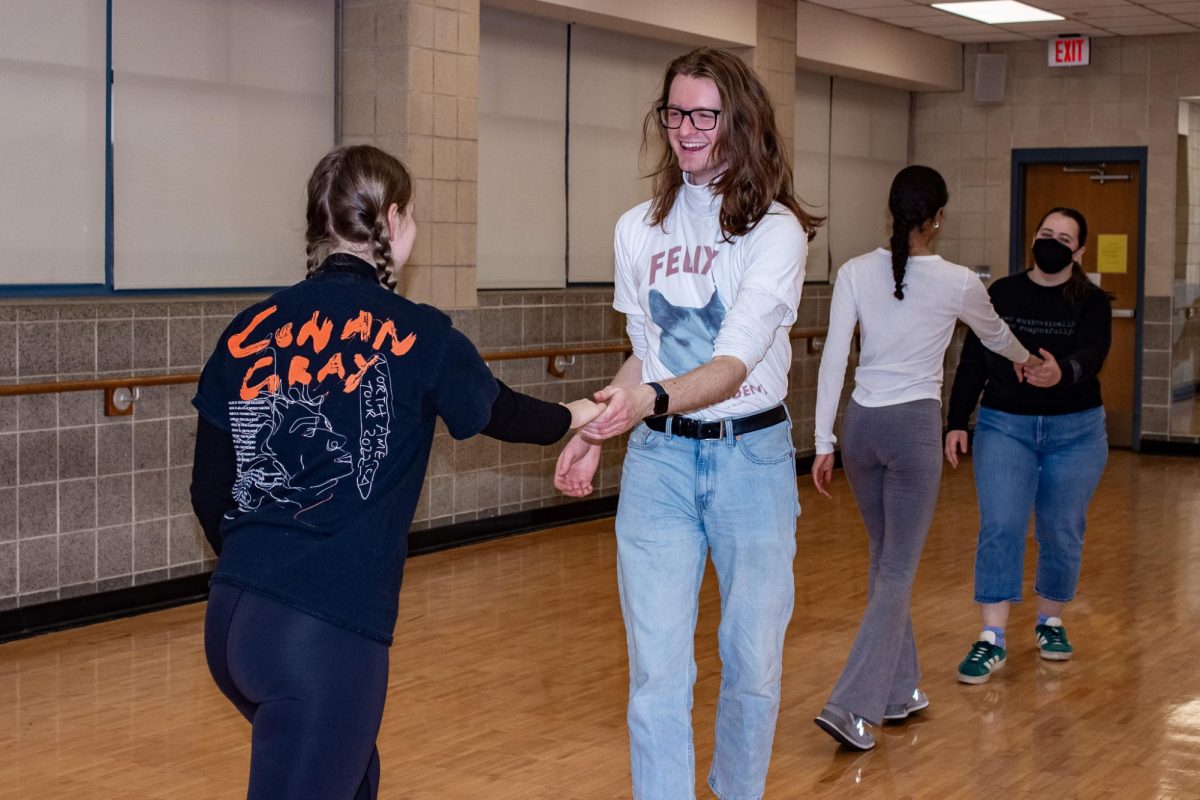Tigers, tigers burning bright
in the campus of the night.
Who stilled Adkins’ hand and eye,
and lost thy fearful symmetry?
“”From “The Tyger Menagerie” by Robert Blystone, Aug. 2015 (With inspiration from William Blake’s poem, “The Tyger”)
These days, students passing David Tuttle’s office, will notice a collection of curious-looking tigers of all shapes and sizes sitting at the right side of the room. When asked what its all about, the dean shared a delightful story.
“One of my mentors when I first came here, Thurman Adkins””he worked here for thirty years or so””was in charge of the Coates Center, called the Student Union at the time,” said David Tuttle. “Every time he went out of town or to different places, if he would find ceramic tigers, he would buy them and he would put them in a display case down in the Tigers’ Den. He probably collected about 90 ceramic tigers over the years.”
Tuttle says that during renovations in the Coates University Center, the tiger collection was dispersed and individual tigers were taken as decorations for homes and offices of people involved on campus.
“When I told him that they had been dispersed, I could see the disappointment in his eyes. It had always kind of rubbed me the wrong way that [the tigers] had been distributed, but it just wasn’t my area, so it wasn’t anything I had any say on,” Tuttle said. “I could see he was a little disappointed, but he isn’t the kind of guy who would say anything. So I thought, “˜You know, I’m going to see if I can try to recollect those ceramic tigers.'”
With this mission in mind and an increasing push for Tiger Pride, Tuttle sought to collect the tigers that had been dispersed and asked for their return.
“The response has been phenomenal; we’ve probably got half the collection back. It was kind of awkward to ask people to give them back, but most people have risen to the call and they’ve returned them to us,” Tuttle said. “I think there are places that we could display these as a collection, and that would be really cool.”
Why would someone invest so much time and energy into compiling a collection of tiger replicas? What was the purpose behind all of this? That is best answered by Adkins himself, in an afternoon phone call to his residence:
“Well, I think it goes back to the fact that Trinity students for years have complained about there not being a lot of school spirit,” Adkins said. “So I thought, “˜Well, okay, we had developed the Tigers’ Den in the west wing of The Coates Center, and it would be maybe appropriate to have a collection of tigers there.”
Adkins set out to collect replicas of Trinity’s mascot himself, and also received contributions from others.
“So I started acquiring some on vacations and all. Some [were] an inch tall up to maybe two feet, and then we had a number of paintings that were not included in the collection but nevertheless had been acquired and were hung around the building and so forth,” Adkins said. ” Here and there, people made contributions to the collection.”
Adkins remembers one tiger in particular given by a noteworthy member of the Trinity community.
“To me, the most valuable, maybe not in terms of dollars but probably the most meaningful to me was a crystal tiger given to us by Mrs. [Elizabeth Huth] Coates, who heard what we were doing and found this tiger, bought it, and gave it to the collection.”
Although the collection does not necessarily highlight Trinity’s
academic prominence, Adkins says it shows that the Tigers are set apart in another way.
“Some people of course in an academic institution would say, “˜That’s dumb; why would you do anything like that? Why not emphasize something academic?’ There’s plenty of people emphasizing academic things, but also there are times when students have felt like there’s not enough self-identity among Trinity students. There’s a place for people being proud of being Trinity students, to be proud of Trinitonians. It seemed like every class came in and kind of thrashed around figuring out who they were, and the school wasn’t doing a really good job of helping [them] understand something of what it meant to be Trinity students and some of the things we had in common and some of the importance of our history. It was just kind of a small part of trying to build this feeling of commonality among Trinitonians.”
As a final thought, Adkins notes that such a collection of tigers could be as important to school pride as the athletic trophies we have acquired over the years.
“Athletic trophies are important, but they’re cheap. They’re not important because they cost a lot of money, they’re important because of what they symbolize. David decided to work on this, and I think it can be important, and I think if people know what’s going on about it, they can add to it.”
According to lists hand-written by Adkins himself, which are now stored in the Special Collections section of Coates Library, there are a total of 135 tigers, acquired from 1970 to 1987 from all over the world, including Italy, Japan, China, India, England, Taiwan, Uruguay, Sweden, Mexico, Germany, Austria and the United States. The collection contained not only three-dimensional tiger replicas but also paintings and pictures from newspapers and magazines, all of which can be found today in Special Collections. A 1985 Trinitonian article written by a student named David Kerr lists different mediums that compose the tigers.
“The substance and being of collectors are reflected in their assemblages. To disperse the collection is to disassemble the being and substance of the departed,” writes Robert Blystone in his essay The Tyger Menagerie. “Thurman spent a third of a century at Trinity as the glue between students, staff, faculty, alumni and administration. Thurman was part booster, part voice of reason and perhaps part cheerleader as well. During those years he assembled a notable collection of tiger artifacts. These objets d’art were comprised of all manner of media: ceramics, paint and canvas, wood, framed photographs, fiber, cloth, plastic, plaques and more. Many of the objects were donations, gifts and remembrances given to the school as much as to Thurman. Thurman Adkins became the Trinitonian curator of 33 years of history. When Thurman reached retirement, like the director of the Smithsonian, he left the collection behind. Unlike the Smithsonian, the collection dispersed. Dribs and drabs went hither and yon. Trinity curio receivers retired or transitioned as the Thurman glue no longer held the collection together.”
Tuttle stresses the importance of this collection and what it means to the Trinity community.
“The fact that we had a staff member here that took his own time, his own money, to put this collection together reinforces just how much our faculty, staff and students care about this institution.” Tuttle said. “There’s just something about this place that’s intangible that led him to beginning that collection; something about this place that’s intangible that people opened up their hearts to return the tigers. You could read a lot of things into [the collection]: the tigers are all different sizes and shapes and types. Just like our Tiger community.”
In true Trinity fashion, Blystone compares the effort to a physical reaction one would study in a science class.
“Where is Thurman Adkins’ collection of Trinity tiger memorabilia? The kinetics of dispersal have been operating for [many] years now,” Blystone said. “The molecular elements of the collection have diffused over some distance and entropy maximized. David Tuttle is addressing several laws of thermodynamics; changing entropy and enthalpy levels and reassembling the tiger collection. The tiger collection has utility after all. I wish the effort good fortune.”
The collection will be displayed in the Coates Center upon the return of each tiger.
“After we do some changes in the Coates Center related to the Centers, we’ll put them somewhere prominent where it can help stoke that Trinity Pride, that Tiger Pride.”






